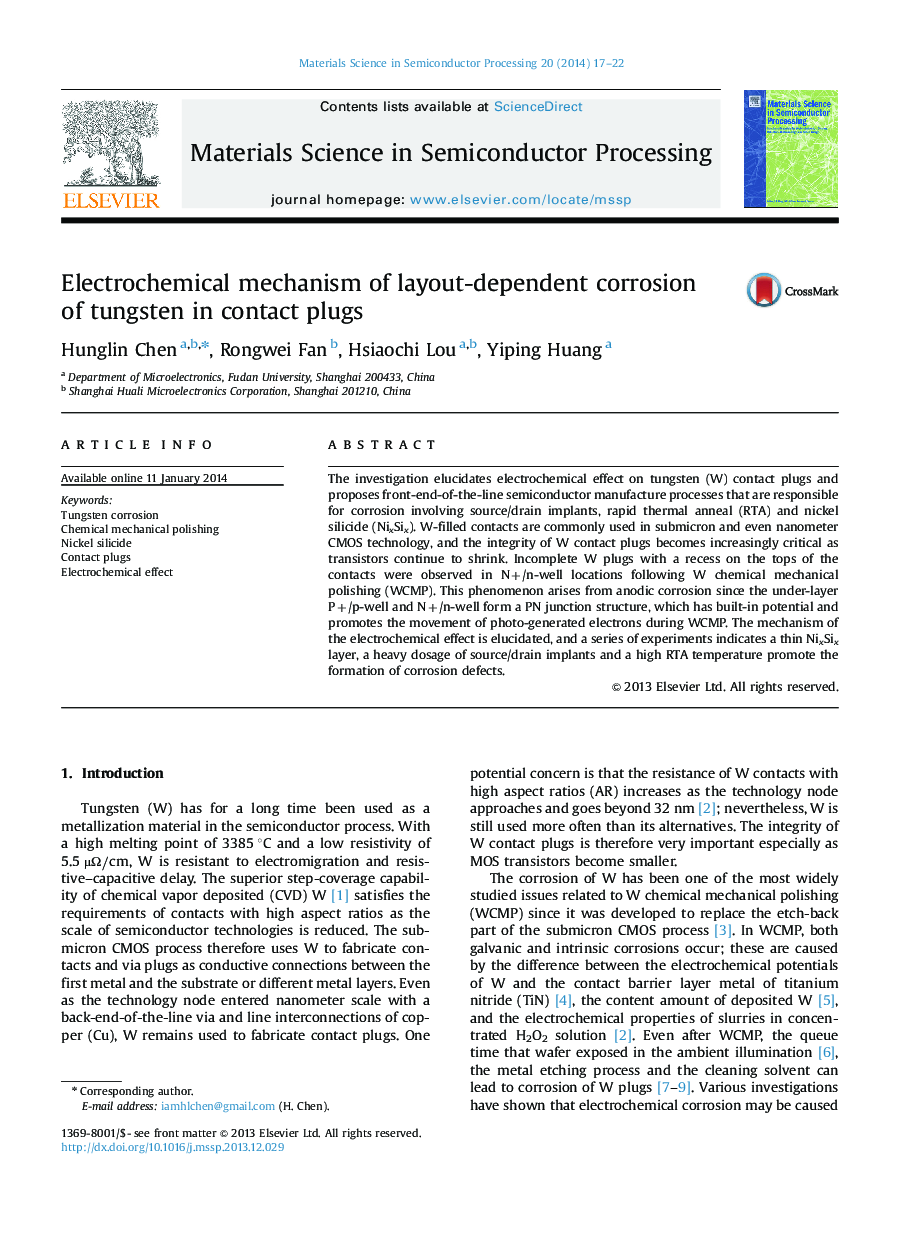| Article ID | Journal | Published Year | Pages | File Type |
|---|---|---|---|---|
| 728244 | Materials Science in Semiconductor Processing | 2014 | 6 Pages |
The investigation elucidates electrochemical effect on tungsten (W) contact plugs and proposes front-end-of-the-line semiconductor manufacture processes that are responsible for corrosion involving source/drain implants, rapid thermal anneal (RTA) and nickel silicide (NixSix). W-filled contacts are commonly used in submicron and even nanometer CMOS technology, and the integrity of W contact plugs becomes increasingly critical as transistors continue to shrink. Incomplete W plugs with a recess on the tops of the contacts were observed in N+/n-well locations following W chemical mechanical polishing (WCMP). This phenomenon arises from anodic corrosion since the under-layer P+/p-well and N+/n-well form a PN junction structure, which has built-in potential and promotes the movement of photo-generated electrons during WCMP. The mechanism of the electrochemical effect is elucidated, and a series of experiments indicates a thin NixSix layer, a heavy dosage of source/drain implants and a high RTA temperature promote the formation of corrosion defects.
